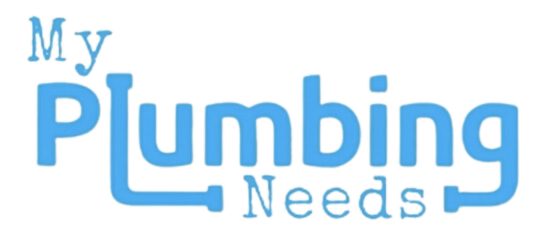Plumbing emergencies can occur without warning, often leading to considerable stress and potential damage to your property if not dealt with promptly. Here is a detailed guide designed to help you manage common plumbing crises efficiently and with minimal disruption.
Identify the Problem
The first and most crucial step in handling a plumbing emergency is to determine the source and nature of the issue. Are you dealing with a burst pipe, an overflowing toilet, or perhaps a serious leak? Identifying the problem quickly will enable you to take appropriate action and prevent the situation from worsening. Whether it's a minor issue or something more severe, knowing the root cause is essential to managing the emergency effectively.
Shut Off the Water Supply
For any major water leak or burst pipe, your immediate priority should be to stop the water flow. Locate the main water shut-off valve in your home, which is typically positioned near the water meter or where the main water line enters the property, such as under the kitchen sink or in a utility cupboard. Once located, turn this valve clockwise to shut off the water, thereby preventing further flooding and damage to your home. For more localised issues, such as a leaking tap or toilet, you can turn off the individual shut-off valves located near each fixture. This ensures you can continue using water elsewhere in the house while addressing the problem area.
Contain and Address Leaks
For minor leaks, your first task is to prevent the water from spreading. Towels, rags, or buckets can be useful in soaking up or containing the excess water. In some cases, you can apply a temporary fix while waiting for professional assistance. For instance, plumber’s tape, pipe clamps, or epoxy putty can provide a short-term solution to seal small leaks. However, always prioritise safety: if the leak involves hot water or is near electrical wiring or appliances, proceed with extreme caution and consider switching off your home’s electricity to avoid any risk of electrocution.
Clear Blockages
Clogged drains and toilets are among the most frequent plumbing emergencies homeowners face. Start by using a plunger to try and dislodge the blockage. If this fails, a plumber’s snake or auger can help clear more stubborn clogs. It is wise to avoid using chemical drain cleaners, as these substances can damage your pipes over time and are hazardous to both your health and the environment. For severe blockages, particularly in the case of sewage backups, it’s essential to call in a professional immediately, as these can lead to serious health risks.
Call a Professional Plumber
For significant plumbing problems such as burst pipes, sewage backups, or substantial leaks, it is vital to call a licensed plumber without delay. Make sure you provide the plumber with as much detail as possible, including the exact nature and location of the problem. This information helps them come prepared with the necessary tools and parts for a swift repair. It’s always a good idea to have the contact details of a reliable plumber on hand, so you can act quickly when an emergency arises.
Mitigate Further Damage
While waiting for professional assistance, take steps to minimise further damage to your home. Move any furniture, electronic equipment, or valuable items away from the affected area to avoid water damage. If possible, use fans or dehumidifiers to start drying out wet areas and prevent the growth of mould, which can develop quickly in damp conditions. If water has pooled, a wet/dry vacuum can be a helpful tool to remove the excess water and reduce the likelihood of structural damage to your flooring or walls.
Document the Damage for Insurance Purposes
In the unfortunate event that the plumbing emergency causes significant damage to your property, it’s important to document everything thoroughly for insurance purposes. Take clear photographs and videos of the affected areas, and keep detailed records of any repairs, professional services, and associated costs. This documentation will prove invaluable when it comes to making an insurance claim, ensuring you can recover as much of the cost as possible.
Final Thoughts
Handling a plumbing emergency swiftly and effectively can make a world of difference in preventing extensive damage to your home and avoiding costly repairs. By following this extended guide, you can approach such situations with confidence, minimising the impact on your home and finances. Quick, informed action, combined with the support of a trusted professional, is key to ensuring a smooth and successful resolution.
Explore more articles on our blog:
- Crafting the ideal bathroom: A guide to perfect layouts
- 10 Essential Plumbing Products Every Homeowner Should Have
- Spring Plumbing Tips
- Top 5 Plumbing Tips Every Homeowner Should Know
- Essential Plumbing Tips for Homeowners: Keep Your Pipes Flowing Smoothly
- Plumbing Essentials: A Comprehensive Guide to Choose the Right Products for Your Home
- 5 Common Plumbing Myths Every Homeowner Should Know
- Essential Plumbing Tools Every Homeowner Should Have
- How to Unclog a Drain Naturally - Tips and Tricks
- The Ultimate Guide to Choosing the Right Water Heater
- Top 10 Plumbing Tips for First-Time Homeowners
- Understanding Different Types of Pipe Materials and Their Uses
- How to Install a New Tap
- Common Plumbing Mistakes to Avoid
- The Benefits of Regular Plumbing Maintenance
- Energy-Efficient Heating Solutions for Your Home
- Smart Home Plumbing: Innovations in the Industry
- How to Choose the Perfect Showerhead for Your Bathroom
- How to Fix a Leaky Tap: A Comprehensive Step-by-Step Guide
- How to Create a Spa-Like Bathroom on a Budget
- How to Install a Bathtub: A Comprehensive DIY Guide

